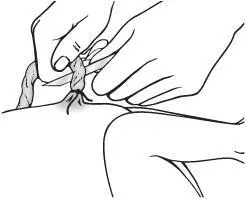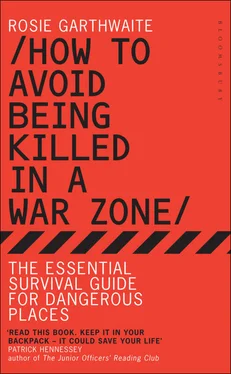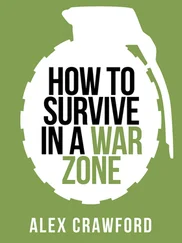Let’s break it down…
Stage 1: Early labour
The initial contractions are getting the baby into the right position for birth. They will become stronger and more frequent as time passes. It might take hours for the baby’s head to work its way down to the right place. There are many ways to help the labouring woman:
• Find the position in which she is most comfortable during her contractions – sitting, kneeling, lying, surrounded by cushions or in a bath of clean water.
• Calm her in any way you can – with words, music or touch.
• Make sure she is breathing deeply during her contractions or she might pass out.
• You can massage her back if it helps. Use ice cubes to cool her down if you have them, or just wipe perspiration away with a cool towel.
• Do not give the mother anything to eat. Tiny sips of water are best.
Stage 2: Labour and birth
The pushing begins naturally, when the body prompts it. Help the mother to find a comfortable position: she can sit as upright as possible with her legs apart, or lie on her side with her knees drawn up, or crouch as if she is squatting to pee. Whichever way she chooses, she will need something clean underneath her – plastic sheeting will do if that’s all you have – and, if she would feel more comfortable to be partially covered, something to go over her knees.
• At this stage the mother needs to pant – short open-mouthed breaths. She needs to keep breathing.
• She should not push during contractions.
• Do not pull the baby’s head or shoulders during delivery. Support the head and shoulders as they emerge, and be prepared for the baby to be very slippery. There is a reason why rookie doctors talk about ‘catching babies’.
• If the umbilical cord is around the baby’s neck, gently unwind it. If it gets broken, the baby risks losing vital blood.
• If the baby emerges feet first and the head is stuck in the birth canal for more than three minutes after the shoulders have come out, you can pull very gently, never with any force, by placing your thumbs over the baby’s hips. As you do this, rotate the baby first clockwise then anti-clockwise a few degrees to free the arms.
• If the mother poos during the birth, which sometimes happens, you should wipe it away, front to back.
Stage 3: Immediately after the birth
• Take the baby and hold it upside-down while supporting its head. This allows the fluid to drain from its mouth.
• When it cries, wrap it in something warm and put it on the mother’s chest. If it is not crying or does not seem to be breathing, you need to begin CPR after two minutes (see CPR for babies).
• About 10 minutes after the baby is born the afterbirth is expelled – your work is not done until that is out. Retain this for later so that the doctor can assess if everything has come out.
• If you are expecting help, do not cut the umbilical cord yourself: wait for the professionals. If not, you need to take your sterile string and tie it tightly around the cord 15 cm from the baby’s tummy. It needs to be tight or the baby will lose blood. Tie another knot 5 cm from the placenta, then use your sharp, sterilized blade to cut between the knots. Put a dressing on the cord until it stops bleeding. Tie another piece of string about 10 cm away from the baby’s tummy.

• Now you need to look after the mother. She will need water, sugar and rest. If the bleeding or pain is severe, you need to treat her for shock (see Shock).
Warning:If you are a pregnant woman travelling somewhere dangerous or remote, make sure you have everything you need to give birth – string to tie the umbilical cord, a fresh blade to cut it, and something warm to wrap the baby in.
Diabetes
If someone in the group you are working with has diabetes, you need to know about it. Not telling you is irresponsible; at the very least, it may explain the person’s occasional grumpy mood and needle marks on their body. They should also brief you on how to treat them if anything goes wrong.
If you are in a war zone or a dangerous place, you might get separated, so they should have the fact that they are diabetic clearly written on their helmet and body armour. They should also be wearing a medical warning bracelet (see Recovery position for adults and children).
Diabetes is all about blood sugar levels, either too much (hyperglycaemia) or too little (hypoglycaemia). You need to know the signs in case they have their first-ever experience of either when you’re together. Because it can be difficult to decide which they have, the safest immediate treatment is sugar. Strangely, it has little effect on a hyperglycaemic person, but will get a hypoglycaemic individual back on the road to recovery. That’s why diabetics often travel with sweets in their pockets. If they have type 2 diabetes (i.e. they have some control over their sugar levels but not much), sweets might be all they carry, so don’t always expect to find an insulin pen.
First signs of hyperglycaemia (high blood sugar):Quickened pulse; no sweating; rapid breathing and thirst. Their breath may smell like nail varnish or pear drops. As it gets worse, they will become sleepy and eventually fall unconscious.
Action:Use an insulin pen – place it against their thigh or into the fat of their stomach and press down on the end like a ballpoint pen. Insulin is the chemical normally produced by the body to regulate blood sugar, so it should help to bring them round. Hurry them to a hospital.
First signs of hypoglycaemia (low blood sugar):Sweating; rapid pulse; short temper; weakness and hunger. They may appear drunk and will get less and less responsive before eventually falling unconscious.
Action:Sit them down and feed them sugar and liquid – orange juice or a fizzy drink is ideal. Once they have recovered they can decide when they should have a dose of insulin, usually when it was next due in any case.
Find their glucose-testing kit and help them to use it so you can check you are not giving them too much sugar.
If they fall unconscious before you can get enough sugar inside them, take them to a hospital as soon as possible.
Diarrhoea
I don’t know how many times I have gone to a place off the trodden pathway secretly hoping for a touch of diarrhoea. It seems like a good way of getting rid of that last bit of tummy. But try as I might – drinking tap water in Delhi, eating meat on a weeklong boat trip in Vietnam, consuming fish in Ladakh – it never seems to come when you want it.
I have since learnt my lesson. It started with salmonella on a boat holiday in Turkey – the loos flushed only once every night, so I had to fling myself into the water in the dark to avoid embarrassment. On another occasion I had terrible tummy problems on a 16-hour journey from Basra to Amman that could have got me killed. I was supposed to be invisible in case our presence at a petrol station or food stop alerted hijackers further up the road. But I kept having to run out to use the loo at each place we passed. It was usually a fetid, stinking hole in the ground, with no door and a grinning audience. But the most painful couple of days I ever spent was two hours north of Timbuktu, running to and from a tent in the Sahara. I woke up naked on a sand dune after passing out on a dash to a private corner of the desert to find a Tuareg guard smiling down at me, offering me his hand.
Poo stories are brilliant, but I wouldn’t encourage you to go after them.
Читать дальше





![Джонатан Димблби - Barbarossa - How Hitler Lost the War [calibre]](/books/385421/dzhonatan-dimblbi-barbarossa-how-hitler-lost-the-w-thumb.webp)







